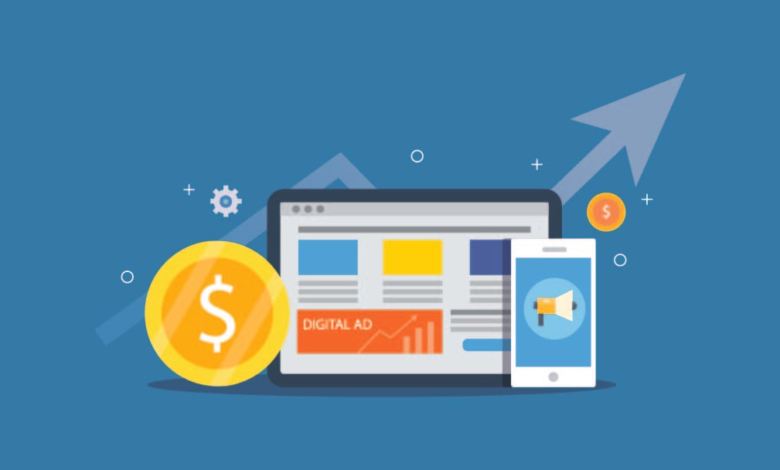Facebook Ads for Beginners Unlocking the Potential of Paid Advertising

Facebook Ads are a form of paid advertising that businesses can use to promote their services or products across Facebook, Instagram, and the broader Facebook network. These ads appear in users’ newsfeeds, stories, and other places within the Facebook ecosystem. By using Facebook Ads, businesses can target specific demographics, interests, behaviors, and more, helping them connect with potential customers in a more personalized way.
Facebook’s advertising platform offers tools that allow businesses to create different types of ads, such as image, video, carousel, and slideshow ads. Ads can be tailored to suit various campaign objectives, from raising brand awareness to driving sales, depending on the business needs. The vast reach of Facebook, combined with its ability to target the right audience, makes it one of the most powerful advertising tools available today.
The Advantages of Using Facebook Ads for Business
Facebook Ads offer several advantages that make them attractive for businesses of all sizes. One of the most significant benefits is the platform’s ability to target specific audiences with laser precision. Facebook allows you to target users based on various criteria, such as demographics (age, gender, location), interests, behaviors, and even purchasing history. This level of targeting ensures that your ad reaches people who are most likely to be interested in your product or service, increasing the chances of engagement and conversions.
In addition to precise targeting, Facebook Ads are incredibly scalable. Whether you have a small budget or a large one, Facebook provides flexibility to adjust your spending based on your goals. The platform also offers real-time performance tracking, which means you can monitor your ads’ effectiveness and make adjustments as needed. This can help optimize ad performance and prevent wasted spending on underperforming campaigns.
Facebook Ads also provide an extensive range of ad formats. Whether you want to run image-based ads, video ads, carousel ads, or collection ads, there’s a format to suit your business’s needs. The ability to experiment with different ad formats gives you the flexibility to find the one that works best for your audience.
Step-by-Step Guide to Running Facebook Ads
Running Facebook Ads involves several important steps, each of which is essential for a successful campaign. Here’s a comprehensive step-by-step guide to creating an effective ad campaign on Facebook:
- Define Your Campaign Goal: Before you start creating ads, it’s crucial to define the objective of your campaign. Do you want to increase traffic to your website, promote a product, generate leads, or raise brand awareness? Facebook offers a variety of campaign objectives that can help you achieve specific goals.
- Choose Your Target Audience: Facebook’s powerful targeting options allow you to reach the people most likely to convert. You can define your audience based on demographics (age, gender, income), location, interests, behaviors, and more. You can also upload a custom audience list based on past customers or website visitors to create highly targeted ads.
- Select the Right Ad Format: Facebook offers several ad formats, including image ads, video ads, carousel ads (multiple images or videos in a single ad), and slideshow ads. Your choice will depend on your objectives and what you think will resonate most with your audience.
- Create Compelling Ad Content: This step involves designing your ad content, including the images or videos, text, and calls to action (CTA). The visuals should be eye-catching and relevant to your product or service. The text should be clear, concise, and contain a strong CTA that encourages users to take action, such as “Shop Now,” “Learn More,” or “Sign Up.”
- Set Your Budget and Schedule: Facebook allows you to set a daily or lifetime budget for your campaign. You can also choose a schedule for when your ads should run. Facebook’s system will automatically adjust your bid to maximize your results within the budget you’ve set.
- Launch Your Campaign: Once everything is set, launch your campaign. It’s important to monitor the performance of your ad in real-time, as this will allow you to make adjustments quickly.
- Analyze and Optimize: After your campaign is live, continuously monitor its performance using Facebook Ads Manager. Look at key metrics such as click-through rates (CTR), conversions, and return on ad spend (ROAS). Based on these insights, you can tweak your targeting, budget, or creatives to improve the effectiveness of your campaign.
Effective Strategies for Crafting Facebook Ads
To make sure your Facebook Ads stand out, it’s important to craft them strategically. Here are some strategies to keep in mind:
- Keep Your Message Clear and Concise: The message you communicate in your Facebook Ads should be simple and to the point. Avoid cluttering your ad with too much text. Focus on one key message that clearly conveys the value proposition of your product or service.
- Use High-Quality Visuals: The visual component of your Facebook Ads plays a crucial role in grabbing the attention of potential customers. Use high-resolution images or professionally produced videos that are relevant to your ad’s message. Visuals should evoke emotions and resonate with your audience.
- A/B Test Your Ads: A/B testing allows you to experiment with different versions of your ads. Test different headlines, ad creatives, CTAs, and target audiences to determine which combination works best. This data-driven approach will help optimize the performance of your Facebook Ads.
- Leverage Social Proof: Social proof, such as customer reviews or user-generated content, can help build trust with your audience. If your product or service has received positive feedback, include testimonials in your ads to showcase this social validation.
- Create Urgency: Ads that create a sense of urgency, such as “Limited-time offer” or “Only a few left in stock,” can encourage users to take immediate action. However, make sure that the urgency is genuine to avoid misleading customers.
Using Facebook AdSpy for Competitive Research
Competitive research is a crucial part of running successful Facebook Ads, and one of the best ways to gain insights into your competitors’ ad strategies is by using Facebook AdSpy tools. These tools allow you to monitor and analyze the ads that competitors are running. You can see what types of creatives they are using, how they target their audience, and even estimate their ad budget.
AdSpy tools can help you identify trends in your industry, discover what type of messaging resonates with your target audience, and give you inspiration for your own ads. They also help you avoid making the same mistakes as your competitors and provide opportunities to stay ahead in a competitive marketplace.
Tracking and Measuring Facebook Ad Performance
To ensure your Facebook Ads are performing well, you must regularly track their performance. Facebook Ads Manager provides an array of metrics that help you assess the effectiveness of your campaigns. These include:
- Impressions: The number of times your ad was shown to users.
- Click-Through Rate (CTR): The percentage of people who clicked on your ad after seeing it.
- Conversions: The number of people who took a desired action, such as making a purchase or signing up for a newsletter.
- Cost per Action (CPA): The cost of each conversion or action taken.
- Return on Ad Spend (ROAS): A measure of how much revenue you generated compared to the amount you spent on ads.
Monitoring these metrics will help you understand whether your campaign is on track or if adjustments are needed.
Avoiding Common Pitfalls in Facebook Advertising
While Facebook Ads offer tremendous potential, businesses often make several mistakes when creating campaigns. Here are a few common pitfalls to avoid:
- Not Defining Clear Objectives: Running ads without a clear goal can lead to wasted ad spend. Be sure to define whether you want to generate leads, increase sales, or build brand awareness before starting your campaign.
- Ignoring Mobile Optimization: Most Facebook users access the platform via mobile devices. If your ads are not optimized for mobile, you may lose a significant portion of your audience.
- Neglecting A/B Testing: Failing to test different versions of your ads can result in missed opportunities. Testing and refining your ads based on performance data is essential for improving results.
- Overlooking the Importance of Ad Frequency: Showing the same ad too many times to the same audience can lead to ad fatigue. This decreases engagement rates and wastes your budget.
Building Your First Facebook Ad Campaign
If you’re new to Facebook advertising, the process of building your first ad campaign can seem overwhelming. However, by following a clear step-by-step process, you can create effective ads that drive results. Start by selecting your campaign objective, defining your target audience, choosing your ad format, and crafting engaging content. Once your ad is live, regularly monitor its performance and make adjustments as needed to improve your campaign’s effectiveness.
Optimizing Facebook Ads for Maximum Engagement
Optimization is key to achieving success with Facebook Ads. You can optimize your ads by experimenting with different creative elements such as images, headlines, and CTAs. Regularly testing new strategies and analyzing the performance of your ads will help you identify what works best for your audience. Over time, optimization helps improve the overall return on investment (ROI) of your Facebook Ads.
How Facebook Ads Benefit E-commerce Businesses
For e-commerce businesses, Facebook Ads are incredibly beneficial in driving traffic to product pages, increasing sales, and promoting brand awareness. Dynamic Ads, for instance, allow e-commerce businesses to display personalized ads based on users’ browsing behaviors or previous interactions with their website. This level of personalization increases the likelihood of conversion and is particularly valuable in the competitive e-commerce space.
Facebook Ads also allow businesses to retarget customers who have shown interest in their products but haven’t yet made a purchase. Retargeting ads are proven to increase conversion rates by reminding potential customers of the products they viewed.
Conclusion
Facebook Ads are a powerful tool that can help businesses reach their goals by effectively promoting products and services. With precise targeting, flexible budgeting, and the ability to monitor performance in real-time, businesses can maximize the impact of their campaigns. By following the strategies outlined in this article—such as defining clear goals, optimizing ad creatives, and continuously monitoring performance—you can achieve successful outcomes and see a high return on your advertising investment. Whether you’re new to Facebook Ads or an experienced marketer, Facebook’s platform offers immense opportunities to grow your business and drive results.





